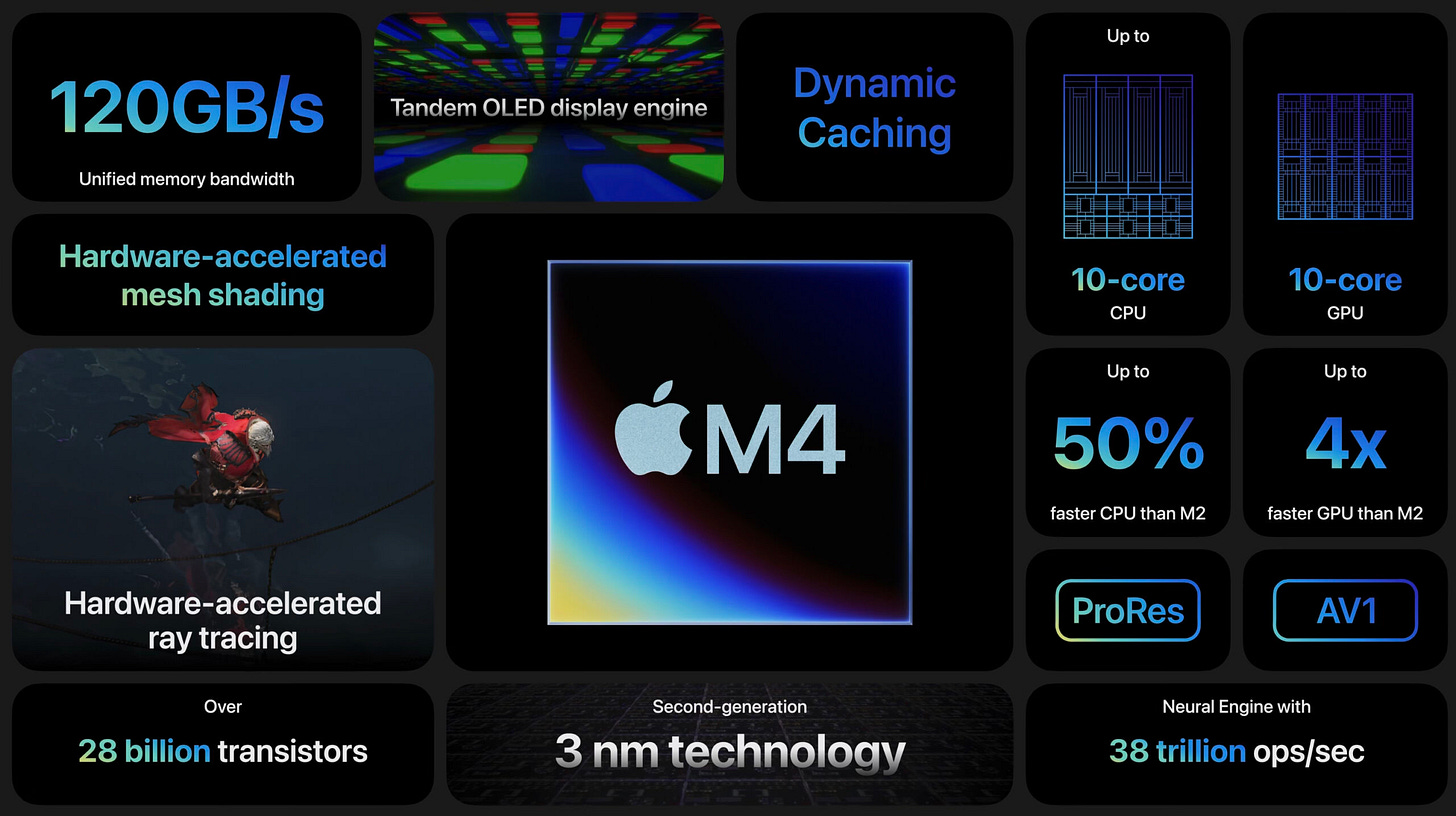Apple's M4 is more bad news for Intel
ARM doesn't appear to be running out of steam any time soon.
Just came across this benchmark of the M4 in the new IPads and its crazy high. Note these are preliminary benchmarks, not official, but I’ll be surprised if they are significantly inflated.
https://wccftech.com/apple-m4-multi-score-faster-than-m3-and-m2/
The M4s initial single core Geekbench score is 3,767. That is by far the highest score I've ever seen, Intel i9s top out around 3,200, and Ryzen 9s around 3,000. And the Snapdragon X Elite has a preliminary score of 3,227. That score is also nearly 50% faster than the M2 in the previous iPads, and 22% faster than M3s in Macbooks.
Those are huge jumps between new releases in the series when we should be expecting the rate of performance gains to be declining. One reason is that it appears they've boosted the clock speed to 4.4 Ghz, the M2 was only 3.5 Ghz. Clock speeds is one metric Apple Silicon has trailed behind Intel/AMD PC processors, and I always thought it necessary to reduce power usage. But now it looks like they can run faster on the new smaller process size while still running cool enough and efficiently enough for an ultra-thin tablet.
Also, the M4’s multicore score of 14,677 is nearly double the M1’s 8,300ish ratings. It’s higher than the M2 Pro and close to the M2 Max used in MacBooks, despite having two fewer performance cores. Thats a huge score for a base processor, and implies that the M4 Max will be pushing a multicore score in the range of 24,000, and M4 Ultra should have no problems exceeding a score of 40,000. For example one of AMD’s fastest workstation processors is the $5,000 AMD Ryzen Threadripper PRO 5995WX, and peaks just shy of 18,000 on Geekbench multicore scores.
Now maybe Geekbench multicore benchmarks can’t be trusted, for example perhaps Apple’s compilers are giving them some special optimization that Intel compilers aren’t doing yet. But the Threadripper requires 280 watts and special cooling because it runs so hot, while the M4 requires a max of 20 watts and fits in a ultra-thin tablet while giving long battery life. More directly the M4 Ultra is likely to require somewhere between 60 and 100 watts (the M2 Ultra requires 60 watts). So even if the benchmarks are biased, and their performance is similar, Apple is producing that performance with a fraction of the power requirement and in far more affordable SOCs.
The big takeaway is the performance per watt advantages of Apple Silicon should have been naturally declining ever since the M1 as competition responded, clearly the competition still isn’t close yet. And with the Snapdragon X Elite and M3/M4, by far the best mobile processors in performance per watt are built on ARM architectures.
I continue to speculate that x86 architectures are so buried in cruft imposed by the chains of 50 years of backwards compatibility that they'll never be able to catch up in performance per watt. If that remains true I expect by the end of the decade x86 will have lost almost all of the laptop and server markets to ARM. This would be terrible news for Intel as it would lose the bulk of its moat made up by proprietary CPUs, and would then be mostly a fab company competing in a hugely capital intensive business against a competitor with significant competitive advantages in TSMC.



